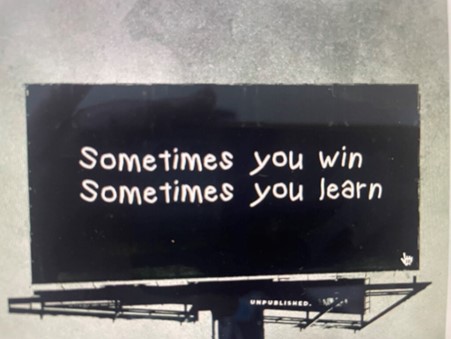Is modern learning just one big misunderstanding?
As an education passionista and founder of a learning platform, I could share dozens of must-read articles. But if I had to pick just one that captures it all – research, insights, humour, reality, and even a touch of drama – it would be Daniel T. Willingham’s piece in The New York Times: “There Are Better Ways to Study That Will Last You a Lifetime”.
One of the core issues? Why students fail to retain what they study is simple: teachers can’t teach learning strategies because, quite frankly, no one ever taught them either. (Case in point: yet another reason why enduri is so urgently needed!). And so, students are left to figure it out on their own – usually with a mix of trial, error, and last-minute cramming marathons.
Daniel T. Willingham’s New York Times Piece: What Makes It Stand Out
Willingham’s article has everything a brilliant piece on learning struggles needs research-backed insights, a touch of humour, and a hefty dose of reality. But don’t just take my word for it – read it yourself! It made me laugh, reflect, and seriously question whether modern learning is just one big misunderstanding.
Or, as a football coach might put it:
“We had good tactics, but the problem was, we had no idea what we were doing.”
Before we dive deeper, let’s explore why mastering learning strategies is more important than ever.

“We had good tactics, but the problem is, we had no idea what we were doing.”
“Rethinking Learning: Insights from Daniel Willingham and How enduri Bridges the Gap”
The gap between theory and practical learning
Imagine a preschool teacher scolding a 4-year-old for not teaching himself the alphabet – ridiculous, right?
As learning expert Daniel Willingham points out: “It’s not up to a 4-year-old to make sure he learns the alphabet. That’s the teacher’s job.” Yet by high school, students are expected to:
- Read difficult books independently
- Memorise complex information
- Manage deadlines and anxiety
How to teach kids how to learn becomes the hidden, unnoticed curriculum. And sadly, most students are left to figure it out themselves. In one survey, only about 20% of college students said they study the way they do “because a teacher taught them.” No wonder so many students don’t know much about how they learn.
Why students struggle despite good intentions
This gap in effective learning strategies has real consequences. Many students develop inefficient study habits or hold misconceptions about what works. In this post, we’ll explore why common learning strategies often fail (as explained by Willingham), which techniques research shows are most effective, and how enduri helps educators, students, and parents put these strategies into practice. enduri’s mission is to offer knowledge to teachers, actionable learning insights to students, and support at all levels to make learning more efficient – ensuring no time is wasted on the journey to real understanding.
The Hidden Curriculum: Learning to Learn
Students Are Rarely Taught to Study
Teachers provide knowledge in the classroom, but learning how to learn is largely left for students to figure out alone. By the time students reach middle school, there’s an assumption they know how to take notes, study for tests, and retain information—yet few ever learn those skills formally. Without guidance, they fall into traps: ineffective review habits, poor time management, and passive learning. This hidden curriculum in education means students navigate a crucial part of learning blindly.
The Cost of Not Teaching Study Skills
What’s the impact of this skills gap? Research shows students adopt poor strategies – and don’t realize their mistake.This is exactly why students fail to retain what they study: they confuse familiarity with real understanding. In one study, when asked to predict which learning approach would work better, most students chose the worse strategy. Why? Because ineffective strategies often feel easier in the short term. Without science-backed study methods for students, they waste time, lose confidence, and often feel that success is about “working harder” rather than working smarter.
Why Common Study Habits Fail
The Comfort Trap: Easy but Ineffective Methods
Students stick to what feels good:
- Re-reading notes
- Highlighting passages
- Passive review
It’s comforting. But as Willingham points out: “Students get studying wrong because they don’t assess whether a method works in the long run. Instead, they pay attention to whether the method is easy.” This leads to the illusion of mastery: feeling like you know the material when you’ve just seen it a few times. Better ways to learn without cramming must replace the cycle of last-minute rereading and panic.
enduri’s Quick Study Tips That Actually Work
enduri focuses on learning strategies that are simple, easy to understand, and easy to implement.
The platform offers four key sections — covering everything from planning and understanding to memorizing and applying new knowledge:
- Use self-testing strategies instead of rereading.
- Space out study sessions over several days.
- Teach the material to one of your peers.
- Use flashcards and other personalised memorization strategies for active recall.
- Reflect on your learning.
These aren’t tricks. They are proven, science-backed ways to study smarter, not harder.
But what do these strategies actually look like in real, everyday learning?
Real-Life Scenarios: Struggling Learners + Supportive Teachers
Maya, 12 – Cramming the night before every test, rereading notes, and wondering why her grades don’t improve.
How enduri helps: Personalized study tips, planning strategies, goal-setting reminders, and reflection tools that show which strategies actually work — reducing anxiety and boosting success.
Mr. Thompson, History Teacher – Wants to help students study better but feels overwhelmed.
How enduri helps: Classroom-ready tools, progress-tracking dashboards, and clear, science-backed study methods that help students learn how to learn — without adding to the teacher’s workload.
How enduri Bridges the Learning Gap
Empowering Teachers with Proven Strategies
enduri doesn’t just deliver learning content. It shows teachers and students how enduri supports personalised learning with simple, structured tools:
For Students:
- Our Learner ID gives students a personal learning profile.
- Self-reflection templates guide better habits.
- Strategies are adapted to fit how they learn best.
For Teachers:
- Practical guides for introducing strategies
- Monitoring student progress
- Coaching with confidence
We move away from passive methods toward science-backed study methods for students—because every student deserves real learning strategies, not just more work enduri provides teachers with clear, research-backed insights on how students learn best. This means:
The Future of Learning: No Time Wasted
The Urgent Need for Change: Start teaching learning strategies early!
Learning is tough. It demands commitment, strategy, reflection, and patience from both students and teachers. When we teach learning strategies early, we close the skills gap before it ever opens. That’s why enduri exists – to bridge the gap between what we know about learning and how we apply it. After all, endurance is built into our name. Because learning isn’t a sprint – it’s a lifelong adventure.
Ready to rethink how learning can feel?
Let’s get started: www.enduri.org
.
Sources:
Daniel T. Willingham’s piece in The New York Times: “There Are Better Ways to Study That Will Last You a Lifetime”.

